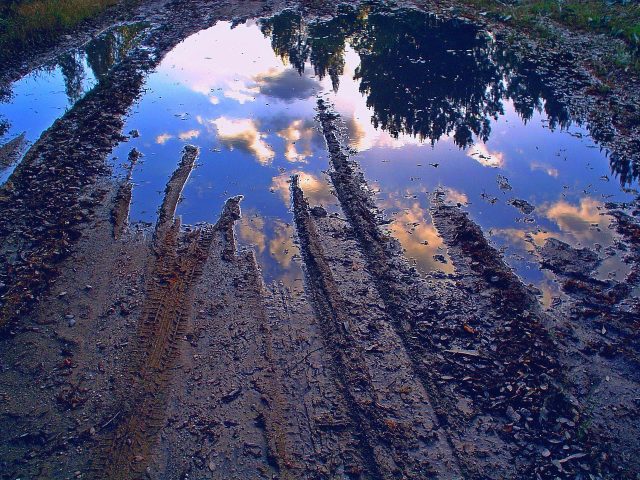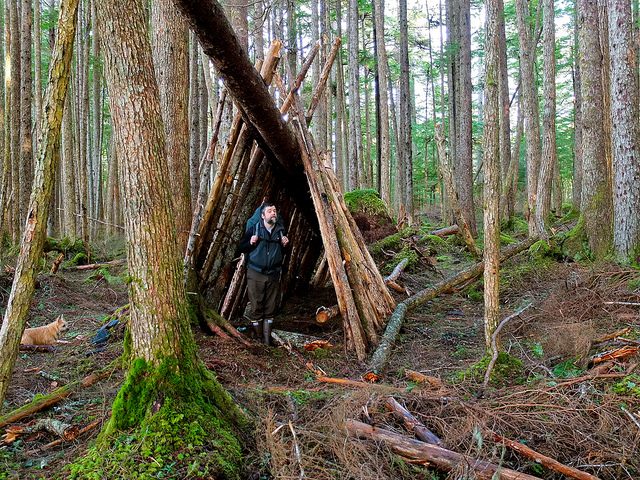Bailing out: Life hacks for the outdoorsman
We have all been there. Out in the woods, either camping or hiking, you suddenly realize that you have forgotten something essential. Or you find that you needed something that you did not even consider you could have needed before you left. So what do you do when this happens? Depending on what it is, there may be a solution to your problem using what things you have with you.
Dirty water

While boiling water is the best way to ensure there are not any lurking bacteria within collected water, boiling is not going to turn mud into water. If your water is full of muck, you can use a piece of cloth to strain out the mud, giving you clearer water short of debris.
Short-use candles

If you are short on light but have some children with you, you may have a box of crayons. A crayon will burn for about 30 minutes, giving you some extra time with a light if you need it, or longer if you have more than one crayon you can use.
Pillow substitute
To replace a forgotten pillow, you can either roll up a towel, jacket, or shirt to give you some extra head support when you are sleeping. Another idea is to inflate a large reclosable bag and use it for cushion. They can pop open under your head, so make sure you do not completely fill it with air, but give it just enough to give some added comfort.
Bear Encounter

There is a big difference in how to treat a black bear and a brown bear should you happen upon one while out in nature. If you happen to have forgotten or just not brought bear pepper spray, you can still make it away from a bear surprise alive. With a brown bear, walk away from the bear very slowly to keep it from chasing you. With a black bear, being obnoxious is better, so make a lot of loud noises to shoo it away from you.
No shelter

If you have found yourself in the woods without a tent and you are in need of shelter, there are ways to make yourself a shelter. The simplest solution, though not good for long-term use, is using a tarp or poncho. You can simply tie two ends of the tarp between two trees, giving you limited shelter, but at least something.
Another good use for a tarp is to tie a rope between two trees and drape the tarp over the rope. You can secure it to the ground with rocks. It could still blow away, but it will help against the elements. If you have no tarp with you, find a fallen tree, and you can use brush and branches to make a make-shift shelter.
Food shortage
The best and safest thing to do when it is possible to run out of food in nature is to have a plant guide with you when you are hiking or camping. But the truth is, most people do not have one with them at all times and you could find yourself suddenly in need of immediate food.
Using the Universal Edibility Test, you can figure out whether a plant is OK to eat. Do remember that most insects are edible, so they would be a safer option to go with, though more unappetizing. The concept behind the edibility test is to limit your exposure to the plant, so if it is poisonous, it will not hurt you much.

Do not do the test with mushrooms under any circumstance. They are just too much trouble. The test only works if you have not eaten for 8 to 10 hours, which will probably be the case if you are considering eating unknown plants.
Break the plant up into its parts (leaves, roots, berries, flowers, etc), because some parts could be toxic while other parts are not. First, rub the crushed and cut plant part onto your skin, really exposing the liquids inside. Leave it for another 8 hours. Of course, some plants, like stinging nettles, make your skin itch but are edible, so this is not foolproof.
After you are sure your skin is OK, try cooking it and place it against your lips. If that seems ok after a few minutes, put it on your tongue. Leave it there for 15 to 20 minutes before chewing it for another 15 minutes. Then you can swallow it if nothing has happened.
Fire starters

Sometimes it can be tricky to get a fire started. Whether the moss nearby is wet or you are tackling another fire issue, there are some solutions to getting a fire started. One of the most effective (and creative) ways to start a fire is to use chips. They have to be fried chips so that they are full of oil and easy to burn, but they will ignite a fire well for you.
You can also use eyeglasses or a clear water bottle to magnify the sun to get a fire going. An egg carton, if you have one with you, is also an excellent fire starter, especially when packed with moss or charcoal. Just light the edge and watch it go.
Limited light

If your flashlight or lantern is short on batteries, you can make a lantern using a soda pop or beer can and a candle. You just need to cut open the sides and fold them outward. Put your candle inside and watch how the inside of the can reflects the candlelight, giving you extra light when you are out in the woods at night.
The best thing you can do before going on any outdoor adventure is to let someone know where you are going and when you are expected to be back. That way, if you do not show up, your contact person can alert the search and rescue to get you the help you may need.
If you have any comments, please drop us a message on our Outdoor Revival Facebook page.
If you have a good story to tell or blog, let us know about it on our FB page. We’re also happy for article or review submissions; we’d love to hear from you.
We live in a beautiful world, get out there and enjoy it. Outdoor Revival – Reconnecting us all with the outdoors.





